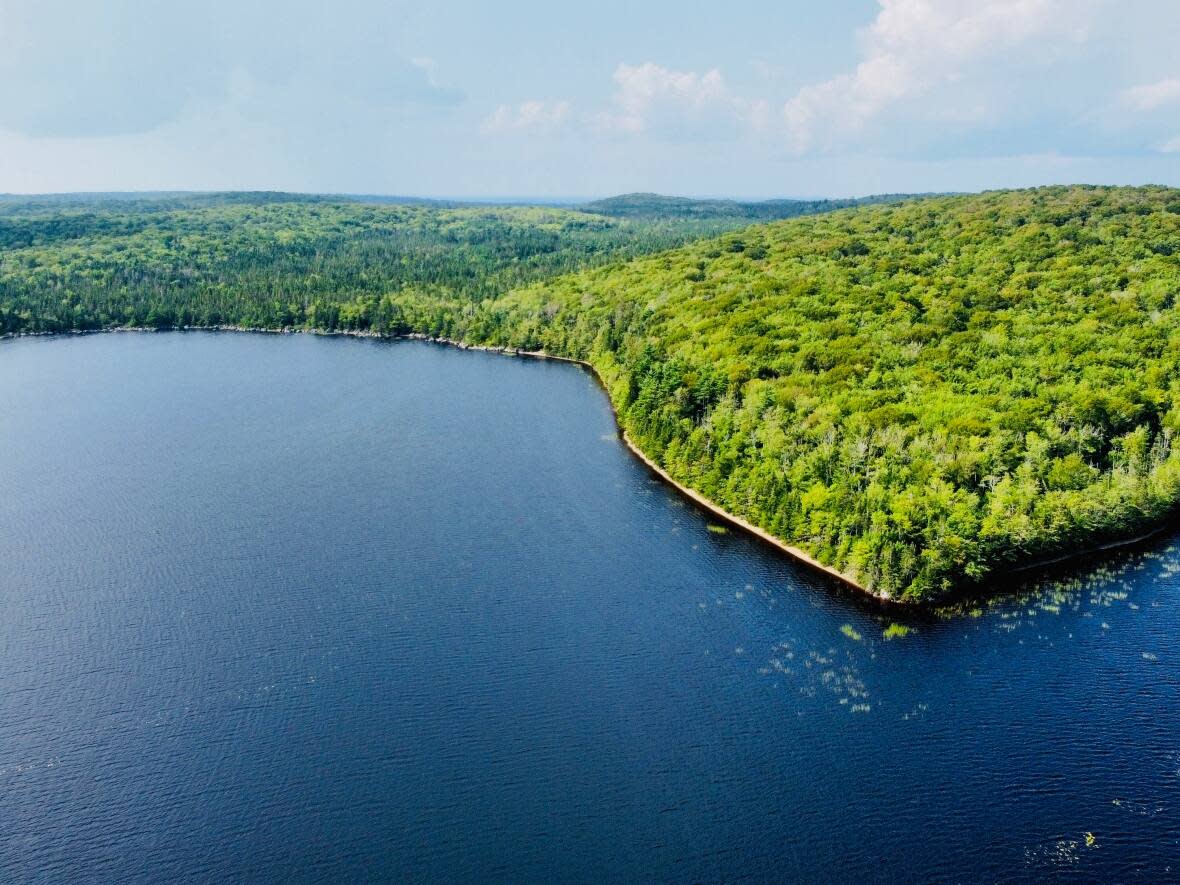N.S. Environment Department working on final recommendation for proposed wilderness area

A proposed wilderness area in Guysborough County could be worth thousands of dollars per hectare in "ecosystem services," according to a new report released by the provincial government.
The analysis of the proposed Archibald Lake wilderness area considers the economic and ecological value of the 684 hectares of land near the St. Marys River if it is protected, as well as the commercial potential of the land for industry such as forestry and mining without the designation.
The area was first floated for protection in 2020 by the former Liberal government.
Nova Scotia Environment Minister Tim Halman says officials in his department are working on a report and recommendation for his cabinet colleagues.
"I'm hoping by the end of the year I can have it before cabinet and then cabinet can render its decision," Halman said this week.
The analysis notes that more than a third of the land is classified as old forest, while most of the rest is primarily mature or older forest.
Much of the site includes ecosystem elements poorly represented in the province's network of existing protected areas, according to the analysis.
"This forest provides habitat for species that depend on or prefer old forest and supports wildlife movement or migration across the landscape (ecological connectivity value). Older forests also store more carbon than younger forests, keeping this carbon out of the atmosphere and helping Nova Scotia meet its 2030 greenhouse gas reduction targets."
Implications of protection on industry
A report commissioned last year by the Nova Scotia chapter of the Canadian Parks and Wilderness Society described the proposed area as an "ecological hotspot."
Although designating the land would not allow for forestry activity to take place in the area, the analysis notes that it's been decades since any harvesting of significance has happened there.
Allowing for protective policies related to old growth forest and other restrictions, only about 83 hectares of the woodland could be used for harvesting, with an approximate value of $165,000, according to the analysis.
Designating the land for protection would have bigger implications for the mining sector.
Mining company St Barbara has identified Archibald Lake as its preferred water source for a proposed gold mine at Cochrane Hill. Protecting the land would all but halt the gold mine project that the company has said could be worth hundreds of millions of dollars in economic activity.

A spokesperson for St Barbara said the company remains committed to getting the necessary environmental permits for the project, although it has no current applications before the federal or provincial government.
"This project will provide hundreds of stable, well-paying local jobs while bolstering rural economic development for years to come," Kenny Cameron said in an email.
"St Barbara continues to engage with community and work with the appropriate regulators to meet all requirements for current and future projects, including Cochrane Hill."
Putting a value on protection
Along with commercial potential, the analysis also looks at the economic potential of protecting the land.
The document notes that researchers around the world are trying to quantify the value of natural ecosystems to society, typically referred to as "ecosystem services." This includes the value of carbon storage and sequestration; water quality; conservation of species; and maintaining habitat for pollinators, wildlife and recreation.
The analysis refers to a 2013 assessment by Global Forest Watch Canada that said Nova Scotia's protected areas have an average annual value of $5,827 per hectare for ecosystem services of the system.
A subsequent report from 2017 by TD Bank Group and Nature Conservancy of Canada pegged the value of ecosystem services of the Long Tusket Lake lands at a minimum of $26,250 per hectare annually.
Halman said such calculations are beginning to carry more weight with governments. He said it's an issue he discussed during recent meetings with his federal, provincial and territorial colleagues.
Scott Beaver, president of the St. Marys River Association, said he's pleased to see calculations of the value of natural ecosystems to society.
"It highlights the importance locals place on the area for intergenerational fishing, hunting camp use and other recreational use and states without designation the potential loss of biodiversity and decline in some outdoor recreation values could happen," he said in an email.
MORE TOP STORIES


